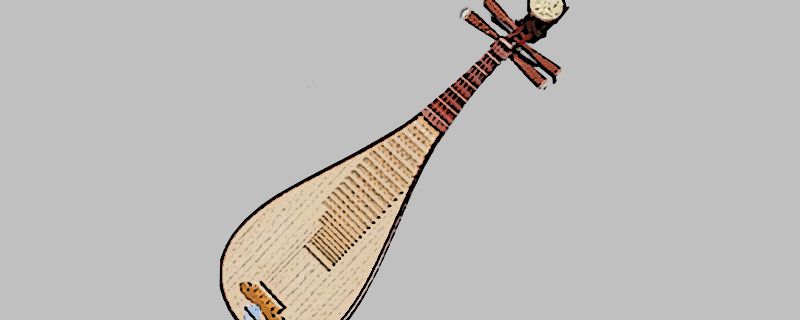Differences between Liuqin and Pipa
Pipa and Liuqin are different in phoneme, volume, range and playing style.
Different phonemes: The phoneme of the pipa is composed of the fret and the phase, while the phoneme of the liuqin is composed of only the fret;
Different volumes: Pipa is relatively large, Liuqin is relatively small;
Different sound areas: Pipa has a high-pitched area as well as a mid-range and low-pitched area, while Liuqin has a higher pitch than Pipa, and is a high-pitched instrument in a band;
The way of playing is different: the pipa is played with armor, while the liuqin is played with shrapnel.

Liuqin is a stringed instrument, also known as Liuyeqin, King Kong leg, and soil pipa. It is a traditional musical instrument in my country. It was originally popular in Jiangsu, Shandong, Anhui and other provinces. It is now popular all over the country, mainly in Linyi, Shandong and northern Jiangsu.
In the national band, the liuqin is a high-pitched instrument in the plucked instrument group. It has a unique sound effect and often plays an important theme in the high-pitched area. Because its timbre is not easy to be concealed and integrated by other instruments, it is sometimes used for the performance of highly skilled cadenza passages. In addition, the liuqin also has the sound effect of the Western musical instrument mandolin, which is unique in cooperation with Western bands.
When playing the liuqin, the player should sit upright, place the qin obliquely in front of the chest, hold the qin in the left hand to press the strings, and the right hand to play the plectrum. The piano used is mostly made of celluloid sheet, nylon sheet, plastic sheet or horn and other materials to make an equilateral triangle.
When playing the liuqin, the right hand has the techniques of playing, picking, double-playing, double-strike, sweeping and rounding, and the left hand has the techniques of chanting, hitting, stringing, pushing and pulling strings and overtones. The fingering symbols are the same as those of the pipa. The fingering symbols are the same.
Involving musical instruments
Guess you like
Hot news
- 01 The handsome guy in 1997 is so advanced in pulling erhu! Netizen: Come and "wash your ears"
- 02 Dulcimer exam and performance repertoire
- 03 The Simple Difference Between Guqin, Se, and Guzheng
- 04 Xiaoxiang Water and Clouds: A Deep Analysis of Humanistic Connotation and Natural Feelings in Guqin Music
- 05 How to tune the liuqin
 渝公网安备 50010702504639号
渝公网安备 50010702504639号